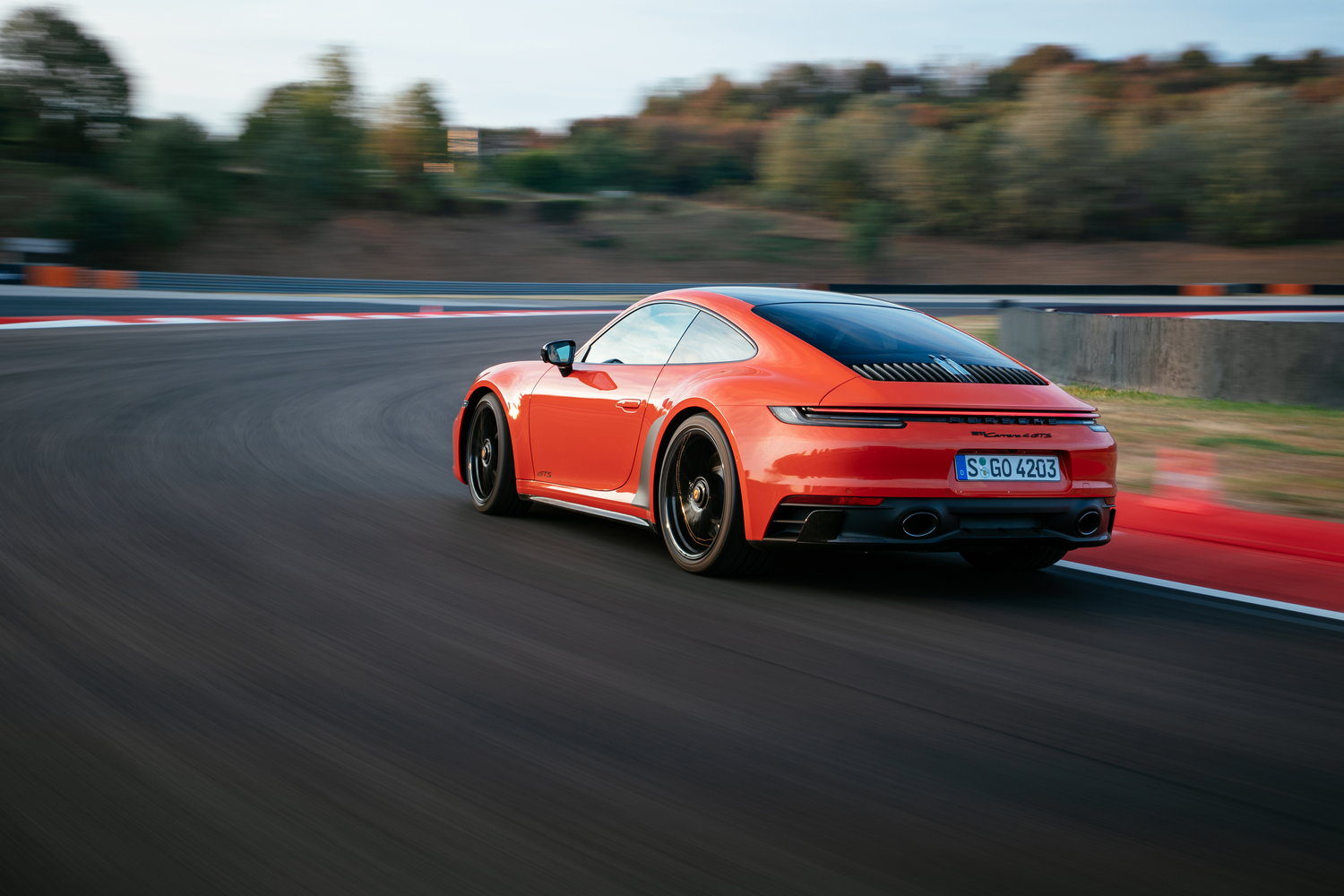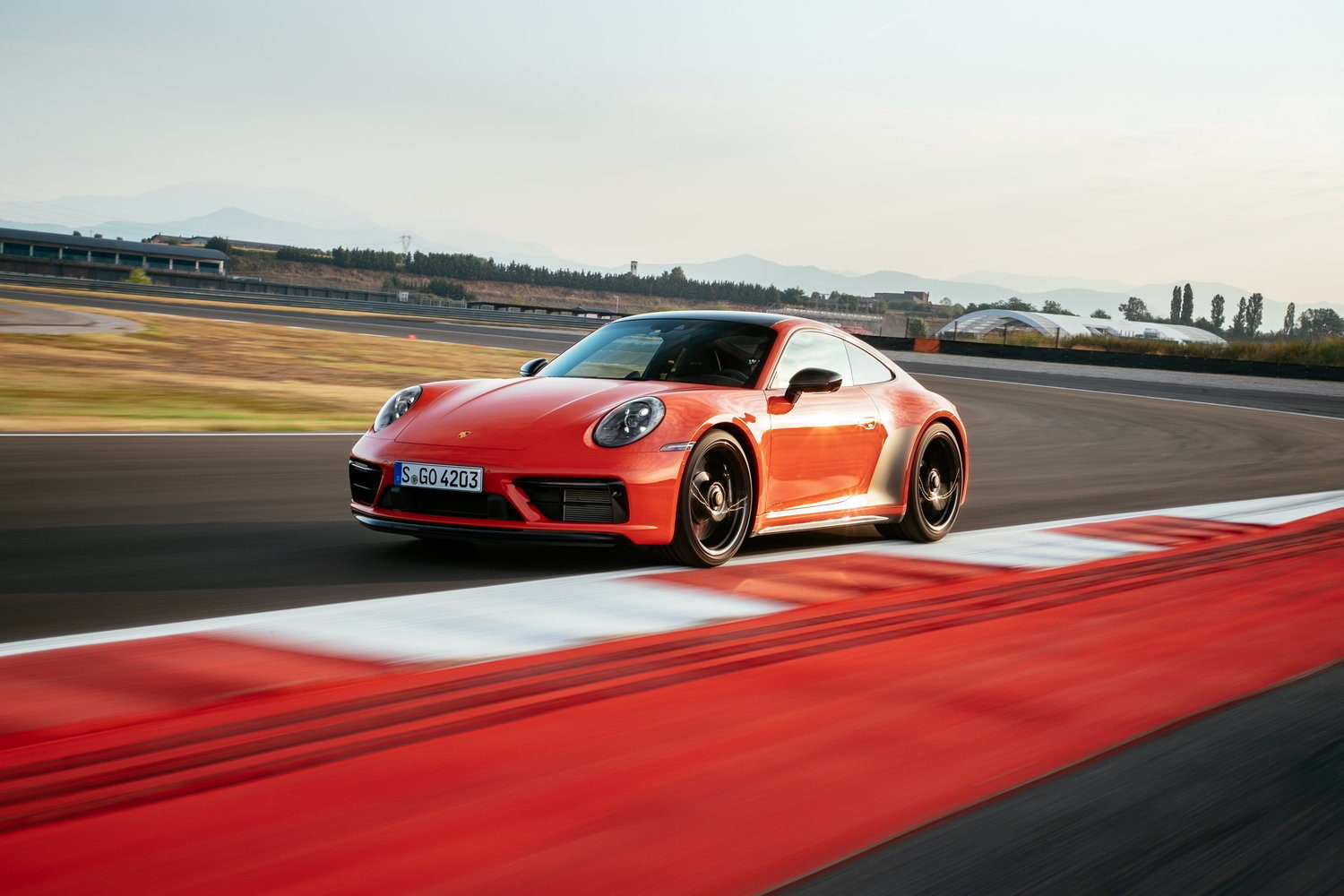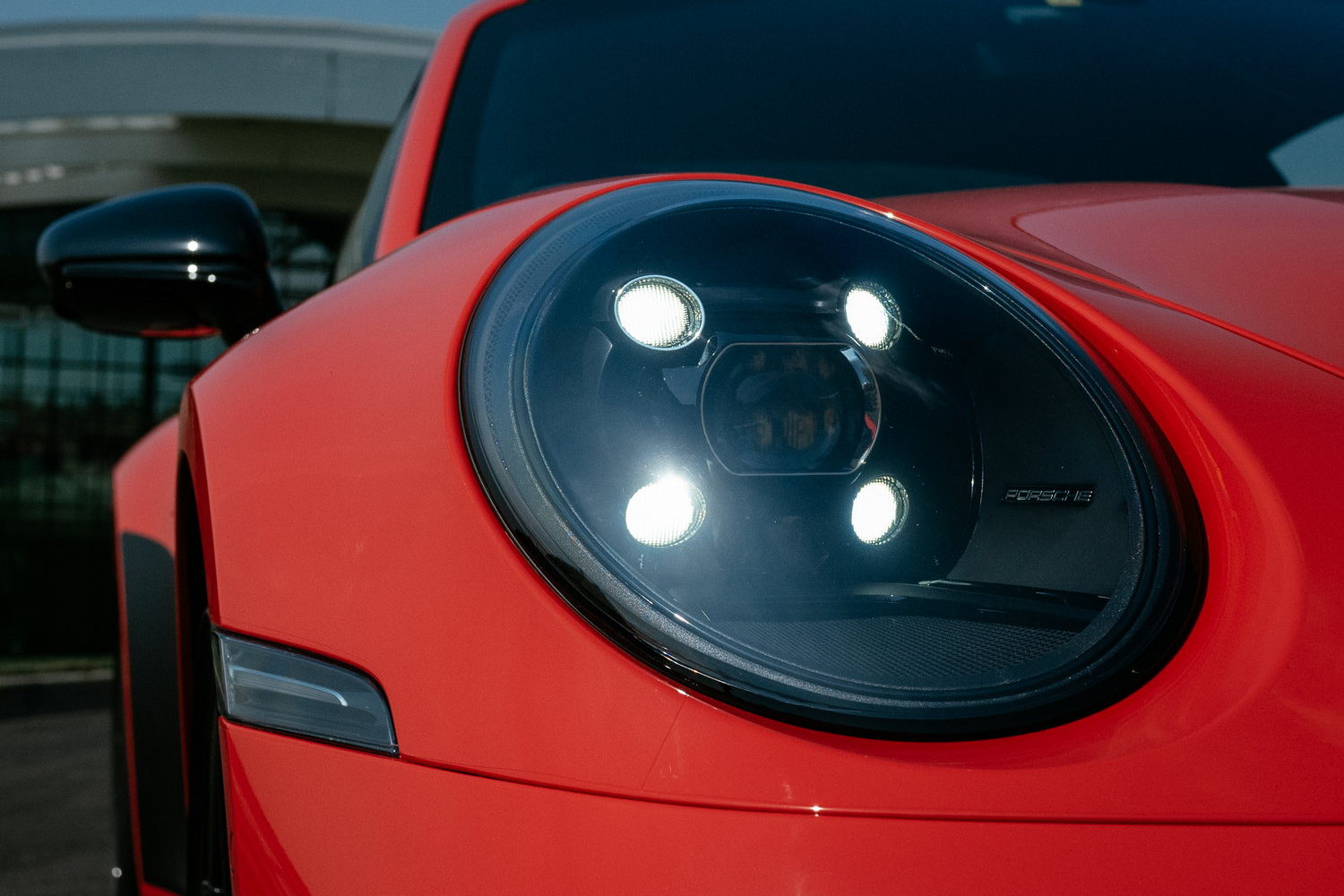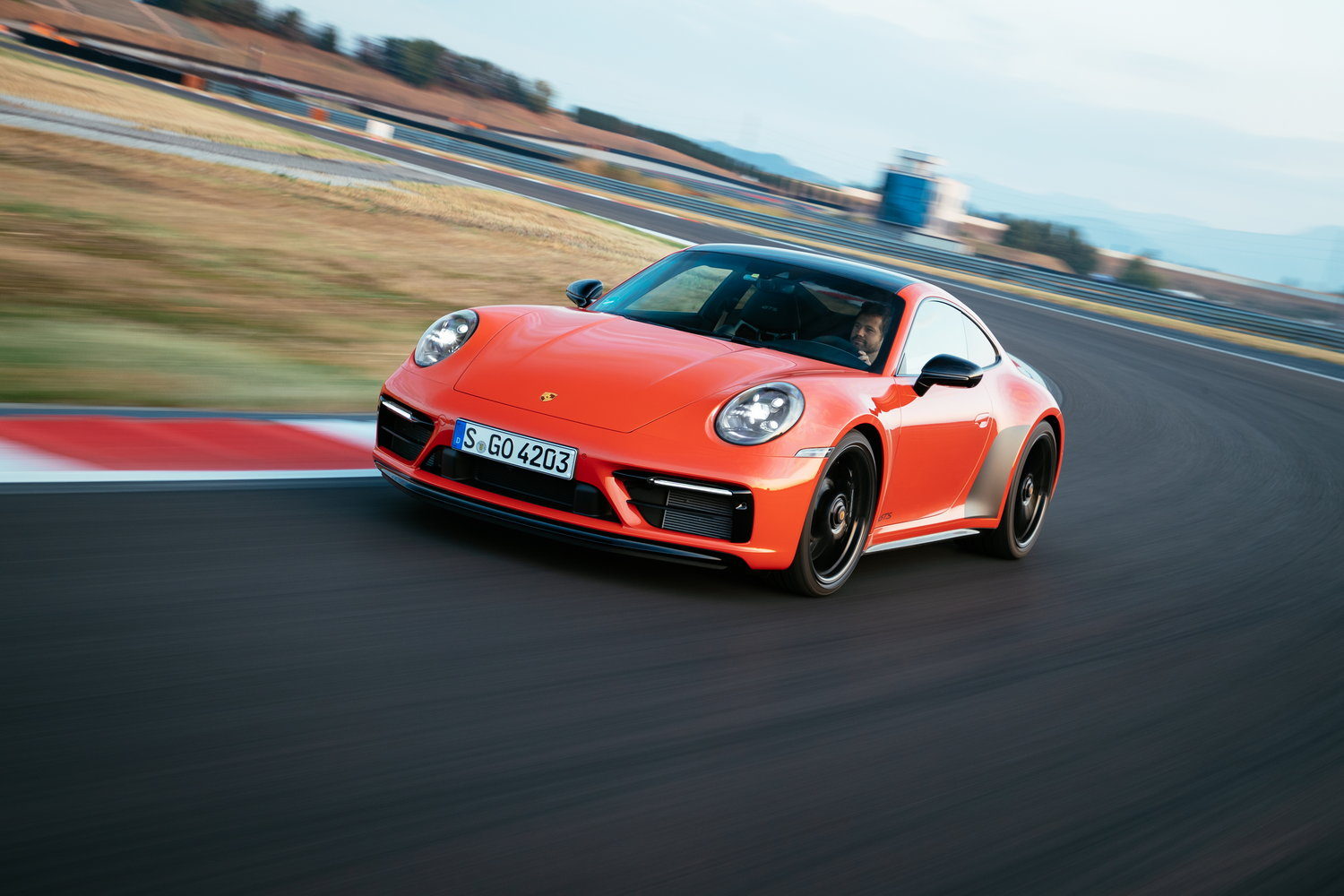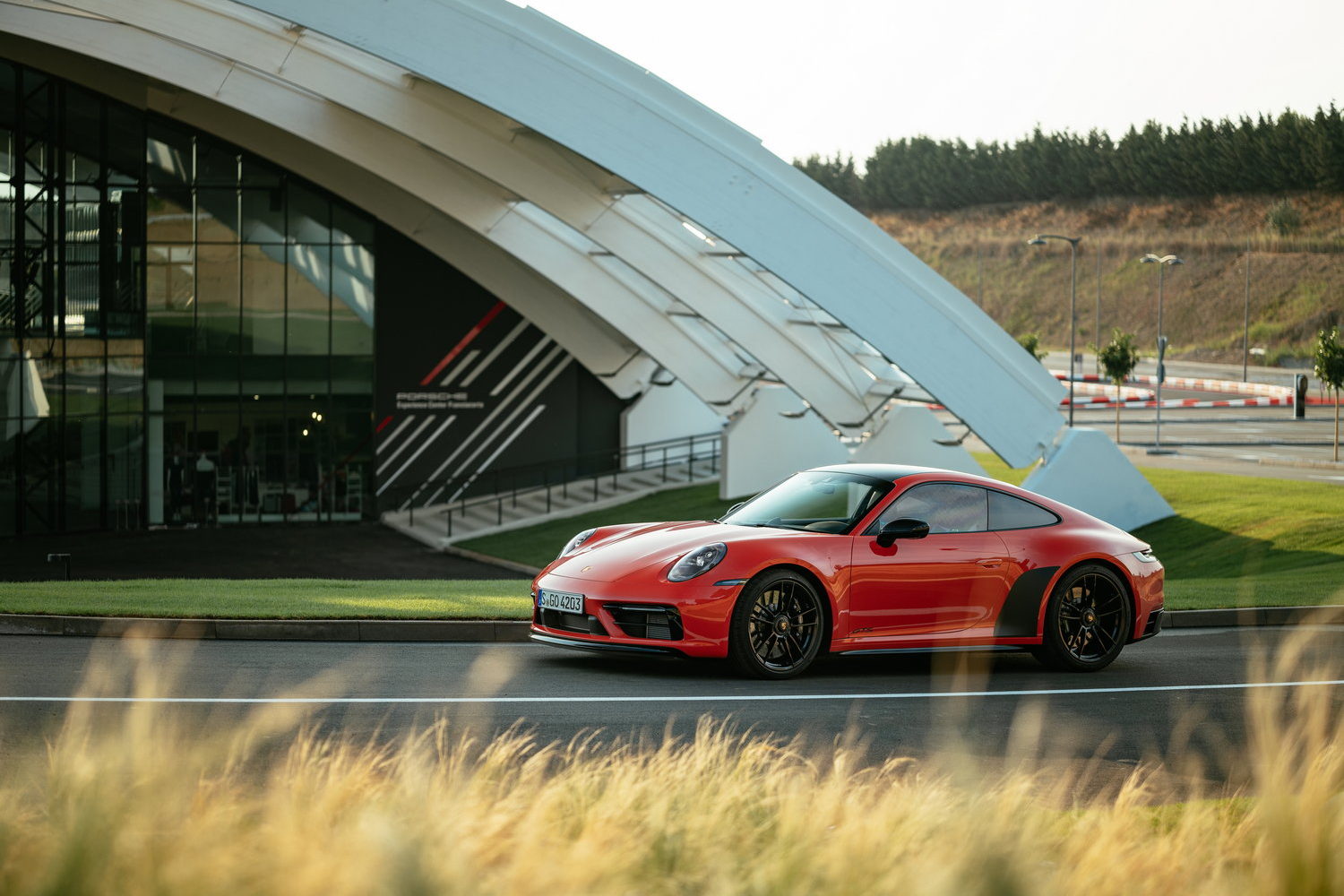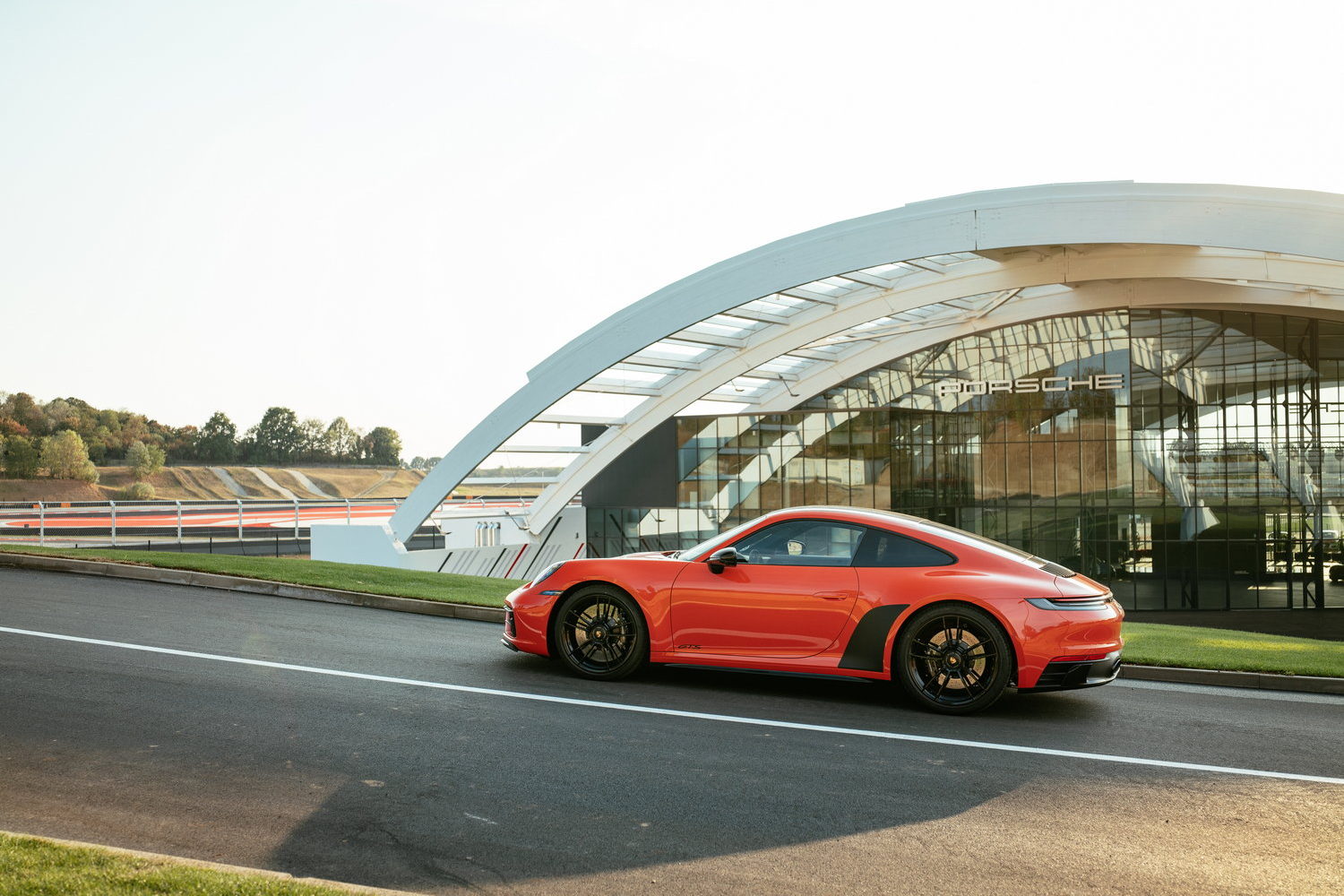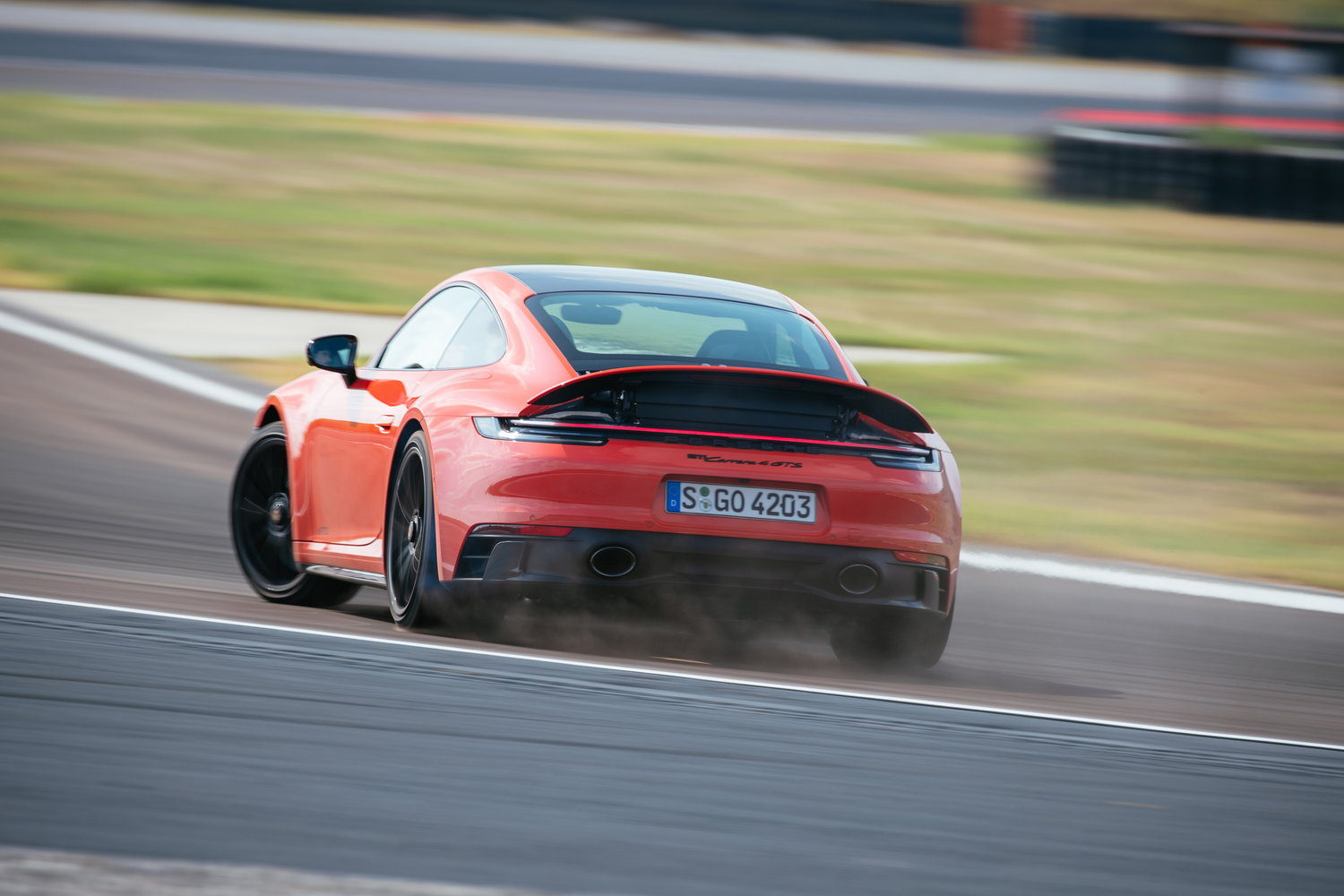Porsche's GTS models exist to bridge the gap between the already rapid Carrera S and the ultra-high-performance GT3 and Turbo versions. In theory, that's a useful niche, and our track drive put the standard GTS coupe straight to the top of the 911 class. Now, we've driven a car on the road, and we've sampled it in all-wheel-drive Carrera 4 spec. Will that change our minds?
In the metal
The changes that mark the GTS out from the lowlier 911s are, to say the least, subtle. The ride height has been cut by 10mm, there's lots of black trim and the sports body kit - which is optional on the basic Carrera - comes as standard. Inside, only the GTS logos and extra black trim mark the GTS out from a standard 911.
But if you want to know whether the car in front is a four-wheel-drive GTS, you're just going to have to look at the back. From the outside, this thing looks identical to the rear-drive version in every way, except for the huge '4' scribbled on the rear bumper. However, even this isn't fool proof because Porsche will remove the lettering if you so wish.
Anyway, the point is few will know whether they're looking at a GTS, let alone whether the car in question has rear- or all-wheel drive. But those three little letters still make a marked difference to the car's attitude.
Hidden away behind the rear seats (which can be optionally deleted, incidentally) is the same 3.0-litre, twin-turbocharged flat-six petrol engine as in the 911 Carrera S, but it has been fettled to produce 480hp - an increase of 30hp over the S and 95hp over the basic 911 Carrera. The GTS also has a bespoke suspension set-up that sits 10mm lower than the standard 911, and that's true no matter whether you choose two- or four-wheel drive.
The result is a car that feels more aggressive, but it's just as practical and well equipped. The basic 911's rear seats are still in situ, and there's the same 132-litre luggage bay at the front. And because this isn't quite as hardcore as some high-performance track cars, there's still a proper touchscreen infotainment system and comfortable seats.
Driving it
Most of the time, there's absolutely no difference between the standard GTS and the all-wheel-drive version. On the public road, the two cars feel like peas in a pod, with the Carrera 4 marked out only by a natty digital display in the instrument binnacle that shows you how much power is going to each wheel.
That betrays just how rear-biased the all-wheel-drive system is, with almost all the grunt going to the back unless it's desperately needed elsewhere. A pootle through town - even on a wet day - is highly unlikely to coax any meaningful amount of power to switch from the rear to the front.
In many ways, that's brilliant, because the GTS is unquestionably one of the best-handling sports coupes money can buy. The steering is light, but direct, giving you a crisp and clear feel for what the front wheels are doing, while the whole car responds to your inputs instantly. Poke the throttle and it surges forward at an alarming rate, while the brakes feel reassuringly firm and positive.
But because the 4 GTS feels so similar to the two-wheel-drive car almost all the time, it also has the same faults. The GTS models have been tuned to offer stability in high-speed corners and unparalleled agility, but that comes at the cost of ride comfort. The tiny sidewalls on those sticky tyres won't help, either. As a result, the GTS feels stiff and jiggly on the sort of unloved country roads that should be a Porsche's natural stomping ground. Even in town, the stiff springs make speed bumps and potholes feel like hammer blows. For day-to-day driving, a 4S is going to be more pleasant, even if you specify the optional ride height reduction.
Realistically, there are only two places that will show off the Carrera 4 GTS's all-wheel-drive system: a racetrack and a snowy road. On the former, the 4 GTS puts its power down slightly more effectively, and that means it's a tenth of a second faster to 100km/h than the standard GTS, hitting the benchmark speed after just 3.3 seconds. However, with a top speed of 309km/h, the all-wheel-drive car is marginally slower at full chat.
None of that really matters, partly because such differences are so minor, and partly because both cars are fast by anyone's measure. But barroom bragging rights will hold some sway among Porsche customers, so it's worth mentioning. Perhaps less important is the minute fuel economy penalty that sees the 4 GTS burn between 10.6- and 11.4 litres of unleaded per 100km, whereas the standard GTS will manage 10.4-11.4 litres/100km.
The most important differences between the two- and four-wheel-drive versions of the GTS will be found when the weather turns nasty. The four-wheel-drive car offers that bit more security on wet and icy roads, and it reduces the chances of being snowed in during winter. It'll also allow slightly more traction on grass, if you ever need it. Of course, the best way to combat rough weather is with winter or all-season tyres, and a 4 GTS with winter rubber is going to feel much more stable when the snow comes down.
What you get for your money
Carrera 4 GTS prices start at a hefty €209,551, and that's an awful lot of anyone's money. It's also around €20,000 more than a Carrera 4S, and that price difference alone will pay for an entire Opel Corsa. So how does this high-spec coupe justify its list price?
Not brilliantly, it has to be said. Of course, it comes with the lower ride height and the black details, but that's almost it for exterior features. The interior gets some GTS embroidery in the seats and carpet mats, and there's optional Race-Tex microfibre trim for the steering wheel and more black interior trim. Otherwise, it's pretty much identical to the S. Except it comes with an extra 30hp.
Summary
The Carrera 4 GTS's appeal lies in its utility. With all-wheel drive on board, there's a safety net; peace of mind that when the rain or snow begins to fall, the car won't have to stay in the garage. For those who live in places where the winters are harsh and the summers only last for a week, it's an easy decision. And for those who plan to go to one of those places, it's still probably worth specifying.
So the Carrera 4 GTS misses out on five stars not because we're unsure of the all-wheel-drive system, but because we're now unsure of the GTS. There's no doubt it's faster and more agile than the S, or that it's less aggressive and hardcore than the GT3, but it still feels too stiff and too unforgiving for use on our roads. A Carrera 4S is cheaper, softer and more usable in day-to-day life. And while it may not feel quite as racy, it's still a fabulous car to drive.






